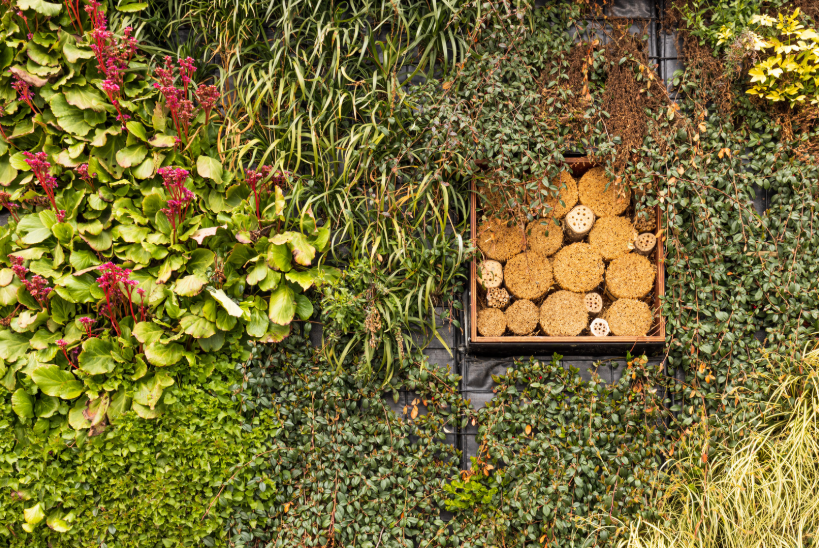Urban areas are facing increasing challenges due to rising temperatures and the urban heat island effect, where cities absorb and retain more heat than surrounding rural areas. A practical solution to combat this issue is the adoption of vertical green wall systems. These innovative installations not only enhance the aesthetic appeal of buildings but also play a critical role in cooling urban environments efficiently.
Understanding Urban Heat Islands
Urban heat islands (UHIs) occur when buildings, roads, and other infrastructure absorb and radiate heat, causing city temperatures to rise significantly compared to nearby rural areas. This phenomenon can lead to higher energy consumption for air conditioning, increased air pollution, and greater health risks for residents. As cities continue to expand, addressing UHIs has become an essential part of sustainable urban planning.
What is a Vertical Green Wall System?
A vertical green wall system is a structure that allows plants to grow vertically on building façades, walls, or standalone frameworks. Unlike traditional landscaping, vertical green wall systems maximize green space without occupying large ground areas, making them ideal for urban environments. These systems typically include a combination of plants, growing mediums, irrigation systems, and support structures designed to ensure long-term growth and maintenance. BSG Landscape & Construction Pte Ltd. specializes in designing and installing high-quality vertical green wall systems that integrate seamlessly with both commercial and residential spaces.
Mechanisms of Urban Cooling via Green Walls
Vertical green wall systems contribute to urban cooling through several mechanisms. One key process is shading. By covering walls and façades with greenery, these systems reduce direct sunlight absorption by building surfaces, significantly lowering indoor and outdoor temperatures. Evapotranspiration is another crucial cooling mechanism. Plants naturally release moisture into the air, which absorbs heat and cools the surrounding environment. Additionally, vertical green wall systems act as natural insulation. They prevent heat from penetrating building walls, reducing the need for energy-intensive air conditioning and lowering overall energy consumption.
Benefits of Vertical Green Wall Systems Beyond Cooling
Beyond cooling, vertical green wall systems offer numerous additional benefits. They improve air quality by filtering pollutants and capturing airborne particles, creating a healthier urban environment. These systems also enhance property aesthetics and can significantly increase real estate value. In densely populated areas, vertical green walls help reduce noise pollution by absorbing sound. Moreover, they contribute to sustainable building practices and can support green building certifications, making them an excellent investment for environmentally conscious developers and property owners. BSG Landscape & Construction Pte Ltd. provides expertly designed vertical green wall systems that deliver both functional and visual benefits, ensuring that every installation maximizes its positive impact on the environment.
Implementation Considerations for Maximum Cooling Effect
Maximizing the cooling benefits of vertical green wall systems requires careful planning and consideration. Selecting plant species suited to the local climate is essential for durability and efficiency. Proper wall orientation and placement are also critical to ensure optimal sun exposure and airflow. Regular maintenance, including irrigation, pruning, and monitoring of plant health, helps sustain the system’s cooling performance over time. BSG Landscape & Construction Pte Ltd. offers comprehensive maintenance services to ensure that every vertical green wall system continues to perform at its best while maintaining its aesthetic appeal.
Success Stories and Case Studies
Cities and commercial buildings around the world have reported noticeable temperature reductions after installing vertical green wall systems. For instance, urban office buildings with vertical green walls often experience cooler façades and lower indoor temperatures, leading to reduced energy bills. Residential developments using vertical green wall systems benefit from improved comfort and enhanced property value, while contributing to a greener, more sustainable cityscape. BSG Landscape & Construction Pte Ltd. has been involved in numerous successful projects that demonstrate these measurable benefits, solidifying its reputation as a leading provider of vertical green wall systems in Singapore.
Takeaway
Vertical green wall systems offer an effective, sustainable, and visually appealing solution to the challenges of urban heat. By reducing building temperatures, improving air quality, and enhancing urban aesthetics, these systems provide significant environmental and economic benefits. Engaging a professional company like BSG Landscape & Construction Pte Ltd. ensures that installations are expertly designed, implemented, and maintained for maximum impact. Investing in a vertical green wall system is not only a step towards urban cooling but also a commitment to sustainability and modern, green urban living.
FAQ
How much can a vertical green wall system reduce building temperatures?
Depending on plant selection, wall orientation, and climate, vertical green wall systems can reduce wall surface temperatures by 10–15°C and lower indoor temperatures by several degrees, decreasing reliance on air conditioning.
Are vertical green wall systems suitable for all climates?
Yes, with proper plant selection and irrigation design, vertical green wall systems can be adapted to tropical, temperate, and even arid climates to provide effective cooling.
What maintenance is required for a vertical green wall system?
Regular watering, pruning, fertilization, and monitoring of plant health are necessary. BSG Landscape & Construction Pte Ltd. provides ongoing maintenance services to ensure long-term performance.
Can vertical green wall systems improve property value?
Yes, properties with well-designed vertical green wall systems benefit from enhanced aesthetics, energy efficiency, and environmental appeal, all of which contribute to increased market value.

